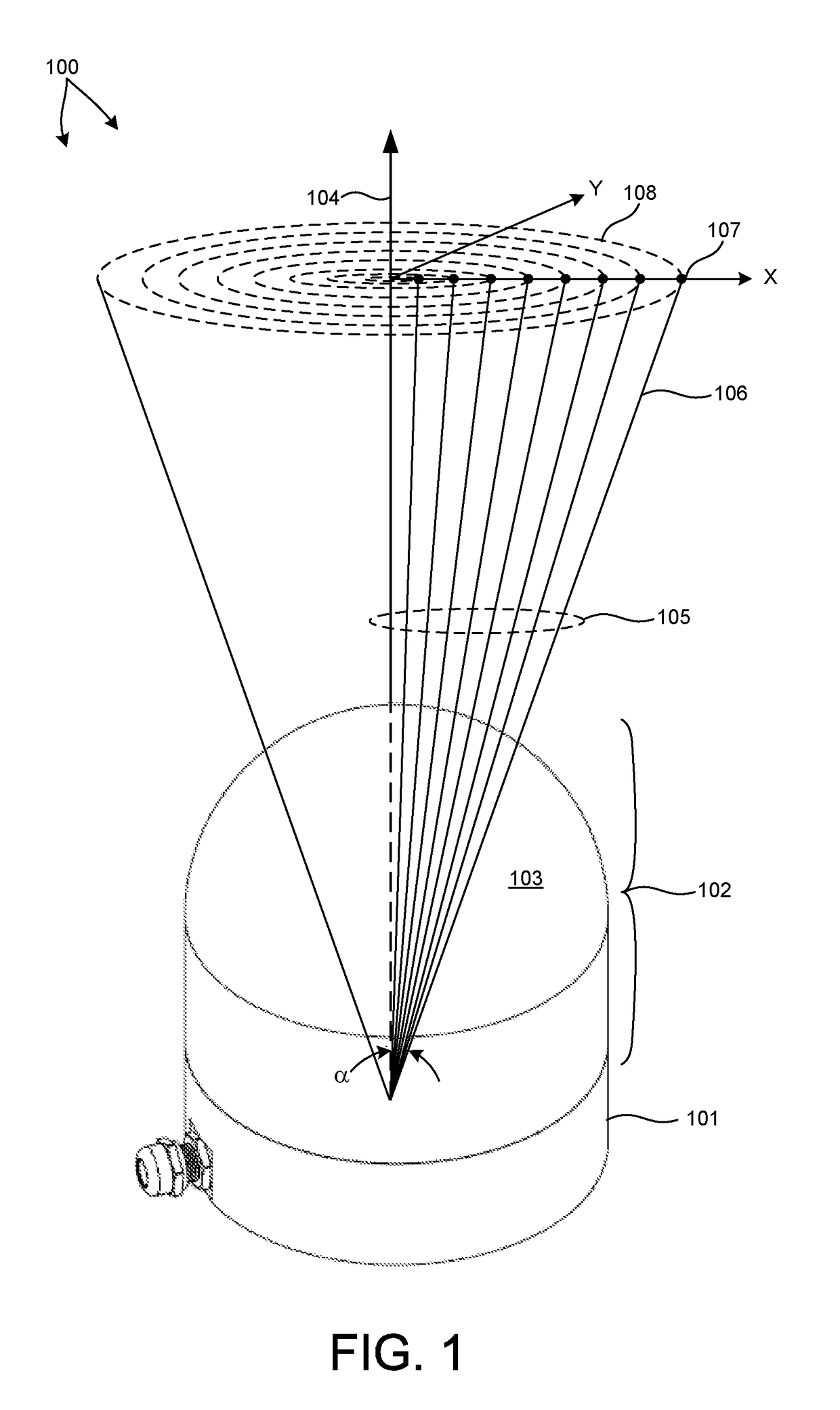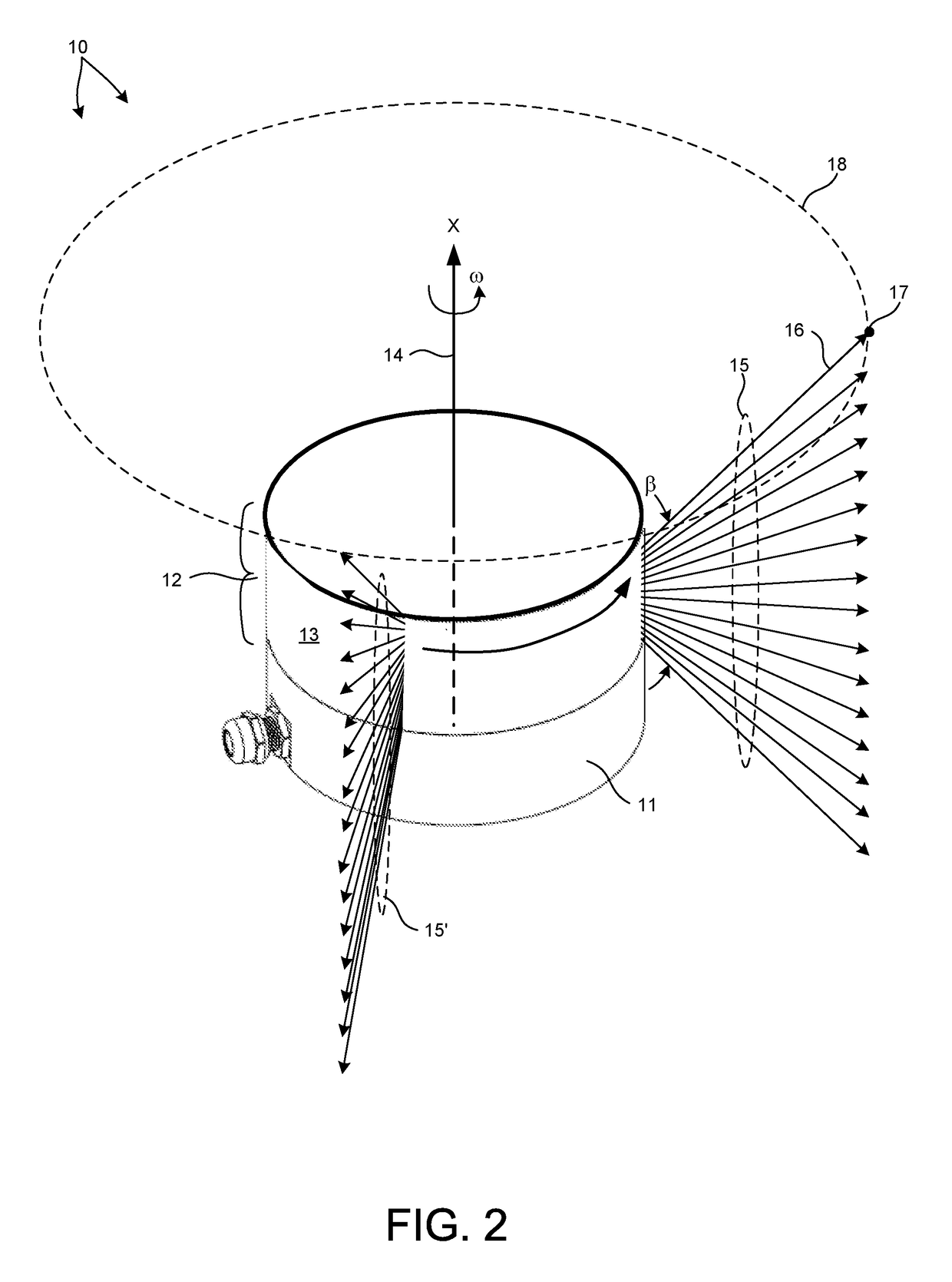Multiple Pulse, LIDAR Based 3-D Imaging
a 3-d imaging and multi-pulse technology, applied in distance measurement, instruments, surveying and navigation, etc., can solve the problems of inability to reduce the density of point clouds, the inability to generate the number of pixels such devices can generate per unit time, and the inability to accurately measure distance, so as to minimize the impact of exogenous noise sources
- Summary
- Abstract
- Description
- Claims
- Application Information
AI Technical Summary
Benefits of technology
Problems solved by technology
Method used
Image
Examples
Embodiment Construction
[0038]Reference will now be made in detail to background examples and some embodiments of the invention, examples of which are illustrated in the accompanying drawings.
[0039]FIG. 1 is a diagram illustrative of an embodiment of a 3-D LIDAR system 100 in one exemplary operational scenario. 3-D LIDAR system 100 includes a lower housing 101 and an upper housing 102 that includes a domed shell element 103 constructed from a material that is transparent to infrared light (e.g., light having a wavelength within the spectral range of 700 to 1,700 nanometers). In one example, domed shell element 103 is transparent to light having wavelengths centered at 905 nanometers.
[0040]As depicted in FIG. 1, a plurality of pulsed beams of light 105 are emitted from 3-D LIDAR system 100 through domed shell element 103 over an angular range, α, measured from a central axis 104. In the embodiment depicted in FIG. 1, the chief ray of each beam of light is illustrated. Each chief ray of each beam of light is...
PUM
 Login to View More
Login to View More Abstract
Description
Claims
Application Information
 Login to View More
Login to View More - R&D
- Intellectual Property
- Life Sciences
- Materials
- Tech Scout
- Unparalleled Data Quality
- Higher Quality Content
- 60% Fewer Hallucinations
Browse by: Latest US Patents, China's latest patents, Technical Efficacy Thesaurus, Application Domain, Technology Topic, Popular Technical Reports.
© 2025 PatSnap. All rights reserved.Legal|Privacy policy|Modern Slavery Act Transparency Statement|Sitemap|About US| Contact US: help@patsnap.com



